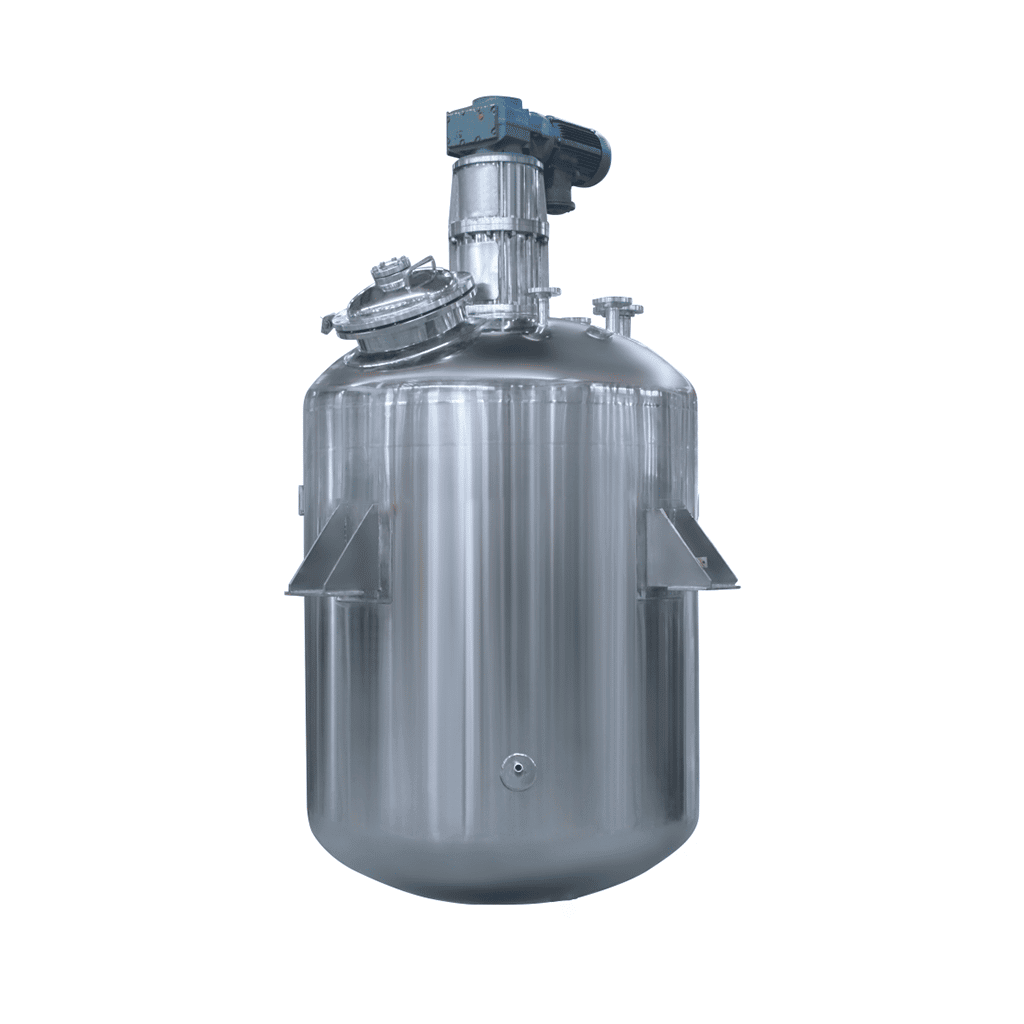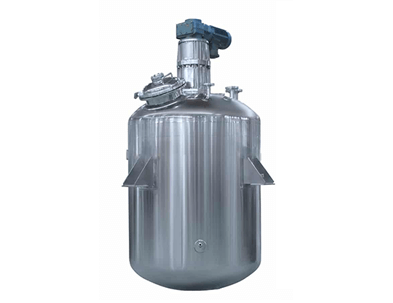
-24-1.jpg)
Stainless Steel Reactor
Stainless Steel Reactor: used in dairy products, sugar, beverages, and other fields
Material
stainless steel (316, 304)
Capacity (L)
10-10000+
Mixing system
anchor, paddle, frame and others
Heating system
electric heating, oil heating and others
A stainless steel reactor is a stainless steel container equipment. The stainless steel reactor consists of a kettle body, a kettle lid, a stirrer, a jacket, a bracket, a transmission device, a shaft seal device, etc. Materials and openings can be made according to user needs and process requirements. Stainless steel reactors are mainly used for stirring, homogenizing, and mixing storage of dairy products, sugar, beverages, food, and various pharmaceuticals.
Request a quoteAs one of the commonly used equipment in the chemical industry, the high-pressure stainless steel reactor must be cleaned after use, otherwise, it will cause dirt, and the dirt will affect the temperature control of the heat exchanger. If the temperature control of the high-pressure stainless steel reactor is unbalanced, it will seriously affect the reaction process and quality and cause a lot of waste. In severe cases, qualitative changes may occur, resulting in the reaction product not being the desired substance.

High pressure stainless steel reactor heat exchanger cleaning types
1.Online cleaning
Online cleaning of high pressure stainless steel reactor heat exchangers can be understood as in place cleaning or in-situ cleaning. It is defined as: without dismantling the high pressure stainless steel reactor or components, under closed conditions, using a cleaning fluid of a certain temperature and concentration to exert a strong force on the heat exchanger to clean and sterilize the surface of the heat exchanger. The advantage is that the high pressure stainless steel reactor does not need to be shut down and does not affect normal production and use. The disadvantage is that the cleaning effect is not very good compared to offline cleaning. If the cleaning time is long, it will affect the stability of the high pressure stainless steel reactor operation.
2.Offline cleaning
Offline cleaning generally refers to disassembling the cleaning components from the high pressure stainless steel reactor or pipeline and transporting them to another location for cleaning. Offline cleaning can be divided into physical cleaning and chemical cleaning.
Physical cleaning: Using high pressure flowing water to clean the high pressure stainless steel reactor heat exchanger requires high pressure cleaning equipment.
Chemical cleaning: Take out the heat exchanger separately, connect the inlet and outlet pipes of the circulating water to the cleaning vehicle, and circulate it. There are two forms of chemical cleaning: acid cleaning and alkali cleaning.
Advantages: Reduces the use of mechanical equipment cleaning agents, and the cleaning effect is good.
Disadvantages: Requires corresponding equipment, such as cleaning vehicles or cleaning water tanks, high pressure pumps, various specifications of connecting valves, welding equipment, etc.
Water spray cleaning: A descaling method using high pressure water spray or mechanical impact. When using this method, the water pressure is generally 20~50MPa. Now there are also higher pressures of 50~70Mpa.
3.Chemical cleaning methods
The chemical cleaning method is to add descaling agents, acids, enzymes, etc. to the fluid to reduce the binding force between dirt and the heat exchange surface of the high-pressure stainless steel reactor and remove it from the heat exchange surface.
The chemical cleaning methods currently used include:
Circulation method: Use a pump to force the cleaning fluid to circulate for cleaning.
Dip method: Fill the equipment with cleaning fluid and let it sit for a certain period of time.
Compared with mechanical cleaning, chemical cleaning can clean the stains in the tiny gaps together, and no deposited particles will be formed on the metal surface of the high pressure stainless steel reactor heat exchanger.
In the chemical industry, a high pressure stainless steel reactor is a commonly used reaction vessel. The control of temperature, force, and liquid level in the high pressure stainless steel reactor is the key to product quality and production. At present, the high pressure stainless steel reactor is a better device for carrying out chemical reactions at high temperatures and pressure. Therefore, it is also important to clean the heat exchanger. Otherwise, the reaction heat will be uneven during reaction experiments, resulting in the reactants not reaching the ideal state. A more serious situation is that the entire experiment fails, causing losses.




